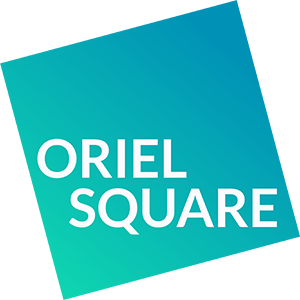As an educational publishing consultancy, Oriel Square has worked with a range of clients in the schools market, such as OUP and Pearson. However, educational publishing is not limited to textbooks and teacher guides, so we offer print and digital publishing services to anyone who wants to create high-quality primary and secondary educational materials, such as multi-academy trusts, English Language Teaching schools, EdTechs, government departments, and charities. We work with companies big and small and, no matter what your goal, we can provide expertise and guidance to help you produce the best possible educational resources. We champion diversity, and can ensure that you get expertise from people with different backgrounds and experiences to ensure your product is representative of and inclusive of your audience.
What is publishing?
The publishing process is the preparation of (usually) written work, either in printed or digital format, for a target audience. This audience could be people within a specific age range, profession, or field of interest, and part of publishing is ensuring that the author’s message is clearly communicated to them through use of different media, specific language, and overall structure. Without going through the publishing process, materials can lack the consistency or clarity to appeal to its intended audience, or may feel like they are lower quality because they haven’t been professionally designed and typeset. The publishing process helps distil the author’s message and ensures consistency across the manuscript or series of manuscripts.
How can Oriel Square help?
The publishing process can seem daunting to a client not familiar with it. Oriel Square is very experienced in supporting clients through each stage and helping them make informed decisions. We have intimate knowledge of the UK publishing industry, one of the most successful in the world, and sharing our knowledge and expertise with clients is a vital part of building a healthy working relationship.
There are a number of steps in the process, through all of which Oriel Square will provide expertise and support. This method follows an ‘inverted triangle’ shape, where broader ideas such as overall product concept and intended outcomes are decided with clarity first, the manuscript is written fully (or as fully as possible) next, and then is gradually refined until only small details are changed at the end of the process. This allows the overall concept and major features of the product to be decided and planned from the start, while finer details can be focussed on later, to ensure the quality of the product is enhanced throughout the process.
The publishing process
The major stages listed below follow this inverted triangle method, and can be adapted to suit the needs of each project (after all, every project is different!). This ensures that the highest quality product is produced at the end of the process and allows the client’s needs and best interests to drive every decision.

Concept development – This is where the idea for the product is determined, including its purpose, the material it will cover (for example, subject curricula or topics), its target audience, its presentation (including design and layout), and key milestones to work towards (such as the publication date).
Commissioning – Here, the best team is identified and commissioned (perhaps the author(s) and if necessary, any experts to review or consult on the manuscript). Oriel Square has an extensive network of authors and freelancers, as well as an internal team of schools and ELT editors. We help the client establish the author brief (based on the product concept) and we make sure everyone working on the project understands what is expected of them. This may involve consultation with the experts we’ve commissioned, in collaboration with the client.
Authoring – This is the main writing phase, where the author produces a manuscript in accordance with the author brief. The commissioning editor is responsible for keeping the author informed of any changes or requirements for images or media, and for helping them meet their deadline by giving support and answering questions.
Development edit – Once the manuscript is complete, the editor will begin development. This includes checking the manuscript meets the author brief, that the structure is clear and logical, the language is audience-appropriate and free of unnecessary jargon, and the information is presented in an engaging and understandable way. This may require changing some text to images or diagrams, or rewording sentences or paragraphs to best communicate the author’s message. During this phase, the editor works in close collaboration with the author to make necessary changes. This phase may include a review from the client or a subject expert to ensure the content is factually correct. This stage of the process is iterative and may take a few rounds to complete, but getting it right should increase the product quality and mean that future revisions will be minimal.
Copy edit – Little or no author or client input is needed at this stage; the development edit should have resolved all conceptual or content-specific issues. Instead, the copy edit focusses on consistency of style and language (where not already resolved by the development editor), and any spelling, grammar, or punctuation mistakes and inconsistencies. If any images need to be drawn by an artist, the copy editor is responsible for writing artwork briefs. Finally, instructions to the typesetter are added to ensure the content will be laid out as intended.
Typesetting – The manuscript is handed over to the typesetters, who will produce the materials in the style and format they will eventually be published in. This will include laying out the content in an engaging way, inserting images as briefed, and ensuring the content looks professional and is easy to read. For digital content, this stage may instead be the responsibility of a software specialist or web designer.
Proofreading – Once typeset, an editor takes another look at the material and compares it with the manuscript. They might also conduct ‘blind reads’ where the content is checked without comparing it to the manuscript, which can be useful in spotting inconsistencies or mistakes. This stage ensures all components of the manuscript have been correctly included, that the design plan has been followed correctly, and that all the content is laid out on the page as intended. Overset refers to any material that couldn’t fit on the page as planned. To resolve it, images may need to be resized or text may need to be cut down. The editor will consult with the author to make these changes as smoothly as possible. The proofread also operates as a chance to catch any mistakes missed at the copy edit stage and to ensure that errors were not introduced during typesetting. Again, this process is iterative and may involve a few rounds between the editor and typesetter to get right.
Sign-off and publication – This is the final phase! This is the moment the content is returned to the client for final approval and sign-off. Because this is the last stage of the process, changes are expected to be minimal (if any). Now is not the time to decide to change an image or even the font, as it undoes a lot of the work done previously. However, at Oriel Square we make sure the client can see the product throughout the process and we encourage feedback, so there are lots of opportunities to get things right before sign-off to avoid any last-minute tweaks. Once approved, the content can be sent for printing, or launched online; and that’s our work done!
This process forms the backbone of publishing all around the world; the UK is a global leader in producing excellent materials. Regardless of your previous experience with publishing, Oriel Square can guide you through this process, with considerations for your project outcomes, deadlines, and budget to ensure you get the best product possible. Our internal team of editors, researchers, and project managers work on a range of projects and can help you access the support you need to make your product stand out in the market and convey your message.
Please do not hesitate to contact us with any questions: the earlier we can get involved with your project, the greater help we can be, and the sooner we can start bringing your project to life!

